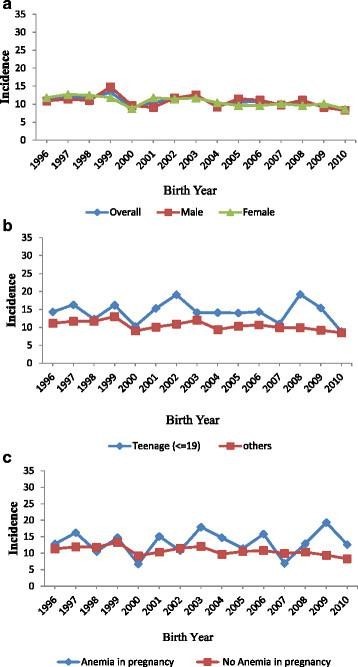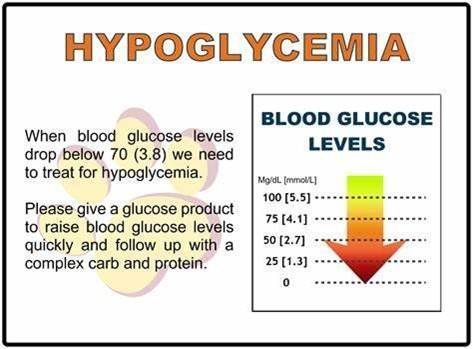Which is true about newborns classified as small for gestational age (SGA)?
They are born before 38 weeks of gestation.
Placental malfunction is the only recognized cause of this condition.
They weigh less than 2500 g.
They are below the 10th percentile on gestational growth charts.
The Correct Answer is D
Choice a) They are born before 38 weeks of gestation is incorrect because this is not the definition of SGA. SGA refers to newborns who have a birth weight or length that is significantly lower than expected for their gestational age, regardless of when they are born. Therefore, a newborn can be SGA even if they are born at term or post-term.
Choice b) Placental malfunction is the only recognized cause of this condition is incorrect because this is not the only factor that can contribute to SGA. Placental malfunction can cause fetal growth restriction due to insufficient blood supply and nutrients to the fetus, but there are other possible causes such as maternal factors (e.g.,
hypertension, diabetes, smoking, malnutrition), fetal factors (e.g., chromosomal abnormalities, infections, congenital anomalies), and environmental factors (e.g., altitude, pollution, stress).
Choice c) They weigh less than 2500 g is incorrect because this is not the criterion for SGA. SGA is based on the comparison of the newborn's weight or length with the expected values for their gestational age, not on an absolute cutoff. Therefore, a newborn can be SGA even if they weigh more than 2500 g, as long as they are below the 10th percentile for their gestational age.
Choice d) They are below the 10th percentile on gestational growth charts is correct because this is the most commonly used definition of SGA. Gestational growth charts are tools that plot the expected weight or length of a fetus or newborn according to their gestational age and sex. They are based on population data and can vary
depending on the ethnicity and region of origin of the mother and the baby. A newborn who falls below the 10th percentile on these charts is considered SGA, meaning that they have grown less than 90% of their peers .

Nursing Test Bank
Naxlex Comprehensive Predictor Exams
Related Questions
Correct Answer is ["B","C","D"]
Explanation
Choice A) Calm, easy to comfort is incorrect because this is not a sign of intrauterine drug exposure, but rather a sign of normal or healthy newborn behavior. Newborns who are calm and easy to comfort are usually well-adjusted and have a good temperament. They respond positively to soothing techniques such as holding, rocking, or singing.
They do not show signs of distress or withdrawal, which are common in newborns who are exposed to drugs in utero. Therefore, this response is irrelevant and inaccurate.
Choice B) Tremors is correct because this is a sign of intrauterine drug exposure that can indicate neurological damage or withdrawal syndrome. Tremors are involuntary shaking or quivering movements of the body or limbs that occur due to abnormal electrical activity in the brain or nervous system. Newborns who are exposed to drugs such as opioids, cocaine, or alcohol in utero may develop tremors as a result of brain injury, hypoxia, hypoglycemia, or seizures. They may also experience tremors as a symptom of neonatal abstinence syndrome (NAS), which is a condition that occurs when the newborn stops receiving the drug from the mother and goes through withdrawal. NAS can cause various physical and behavioral problems in the newborn, such as irritability, poor feeding, vomiting, diarrhea, sweating, fever, or seizures. Therefore, this response is clear and accurate.
Choice C) Persistent shrill cry is correct because this is a sign of intrauterine drug exposure that can indicate pain or discomfort in the newborn. Crying is a normal and natural way for newborns to communicate their needs and feelings. However, some newborns who are exposed to drugs such as opioids, cocaine, or alcohol in utero may cry more often, louder, or longer than usual. They may have a high-pitched or piercing cry that is difficult to soothe or stop. This may be due to various factors such as hunger, colic, infection, injury, or withdrawal. A persistent shrill cry can also affect the bonding and attachment between the newborn and the parents or caregivers. Therefore, this response is clear and accurate.
Choice D) Difficult to console is correct because this is a sign of intrauterine drug exposure that can indicate emotional or behavioral problems in the newborn. Newborns who are difficult to console are usually unhappy and restless. They do not respond well to soothing techniques such as holding, rocking, or singing. They may have trouble sleeping, feeding, or interacting with others. They may also show signs of agitation, anxiety, or depression. These problems may be caused by exposure to drugs such as opioids, cocaine, or alcohol in utero, which can affect the development and function of the brain and nervous system. They may also be influenced by the environment and relationship of the newborn with the parents or caregivers. Therefore, this response is clear and accurate.
Correct Answer is C
Explanation
Choice a) D5W intravenously is incorrect because this is not the preferred method of feeding for a hypoglycemic infant. D5W stands for dextrose 5% in water, which is a solution that contains glucose and water. It can be used to treat hypoglycemia by providing a source of energy and fluid to the infant. However, it has several disadvantages, such as requiring an invasive procedure, increasing the risk of infection, causing fluid overload or electrolyte imbalance, and stimulating insulin secretion, which can lead to rebound hypoglycemia. Therefore, D5W intravenously should be reserved for severe cases of hypoglycemia that do not respond to oral or enteral feeding.
Choice b) Formula via nasogastric tube is incorrect because this is not the first-line option of feeding for a hypoglycemic infant. Formula is an artificial substitute for breast milk that contains nutrients and calories to support the infant's growth and development. It can be given via nasogastric tube, which is a tube that passes through the nose and into the stomach, when the infant cannot suck or swallow effectively. However, formula has several disadvantages, such as being less digestible, less immunogenic, and less adaptable than breast milk, as well as increasing the risk of necrotizing enterocolitis, allergy, or infection. Therefore, formula via nasogastric tube should be used only when breast milk is unavailable or contraindicated.
Choice c) Breast milk is correct because this is the best and most recommended type of feeding for a hypoglycemic infant. Breast milk is the natural and optimal food for infants that contains all the nutrients and antibodies they need to grow and thrive. It can be given directly from the breast or expressed and fed by bottle or cup. Breast milk has several advantages, such as being easily digestible, enhancing immune function, promoting bonding, and adjusting to the infant's needs. Breast milk also contains lactose, which is a natural sugar that can raise the blood glucose level of the infant without causing a spike in insulin secretion. Therefore, breast milk should be offered to the hypoglycemic infant as soon as possible after birth and at regular intervals thereafter.
Choice d) Glucose water in a bottle is incorrect because this is not an appropriate type of feeding for a hypoglycemic infant. Glucose water is a solution that contains glucose and water. It can be given by bottle or cup to provide a quick source of energy to the infant. However, it has several disadvantages, such as providing no other nutrients or calories, interfering with breastfeeding, causing diarrhea or dehydration, and stimulating insulin secretion, which can lead to rebound hypoglycemia. Therefore, glucose water in a bottle should be avoided or used sparingly for mild cases of hypoglycemia that do not respond to breast milk.

Whether you are a student looking to ace your exams or a practicing nurse seeking to enhance your expertise , our nursing education contents will empower you with the confidence and competence to make a difference in the lives of patients and become a respected leader in the healthcare field.
Visit Naxlex, invest in your future and unlock endless possibilities with our unparalleled nursing education contents today
Report Wrong Answer on the Current Question
Do you disagree with the answer? If yes, what is your expected answer? Explain.
Kindly be descriptive with the issue you are facing.
